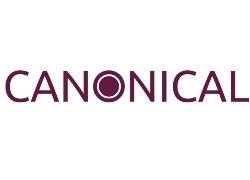Canonical has released Ubuntu Core 16 for the Internet of Things (IoT), with regular and reliable security updates, and app stores for intelligent connected devices.
Ubuntu Core is already in use in top-of-rack switches, industrial gateways, home gateways, radio access networks, digital signage, robots and drones. “Ubuntu Core secures the Internet of Things and provides an app store for every device,” said Mark Shuttleworth, founder of Ubuntu and Canonical.
“As companies continue to embrace Internet of Things solutions, security and quick, easy system updates are critical,” said Jason Shepherd, director of Strategy and Partnerships, IoT, Dell. “Dell has been working with Canonical on Ubuntu Core for over a year, and our Dell Edge Gateways are fully certified for Ubuntu Core 16. This enables Dell to offer the long term support and security that IoT use cases such as factory and building automation demand.”
The new Ubuntu Core delivers groundbreaking security, management, operations and upgradability in a compact, developer-friendly platform, thanks to its use of ‘snap’ packages. Snaps are securely confined, read-only, tamper-proof application images, digitally signed to the integrity of IoT software.

Mac Devine, IBM vice president & CTO of Emerging Technology & Advanced Innovation, Cloud Division, commented: “With the cognitive era producing more intelligent devices, fundamental changes are needed to handle the volume of data and real-time cognitive insight. Snaps allow developers to build and deploy applications in a format that’s easily portable and upgradeable across a number of IoT devices so that a cognitive relationship between the cloud and the edges of the network can be established.”
Update Control allows software publishers and manufacturers to validate updates across the ecosystem before they are applied. Snap updates are transactional, which means that failures are automatically rolled back, giving developers the confidence to update their applications regularly.
Brian Gerkey, CEO, Open Source Robotics Foundation (OSRF) added: “OSRF works with engineers, scientists, and entrepreneurs around the world to bring robots from the research labs into our daily lives, in factories, fields, homes, and roads.

Among the many challenges arising from deploying robots into the real world, remote management and upgrading of robot software is a common and significant problem faced by the community. I think that Ubuntu Core 16, with the ability to deploy ROS applications as snaps, offers an opportunity to make the whole software management process easier and more secure, helping developers and organisations in their robotics deployment.”
The operating system and kernel in Ubuntu Core are also delivered as snaps, so the entire platform is transactionally upgradeable. All Ubuntu Core devices, from all manufacturers, will have free, regular and reliable OS security updates.
James Jackson, general manager, Maker & Innovator Group, Intel, commented: “Robotics has the potential to impact nearly every industry, from health to space exploration. This future will be based on a secure, reliable platform – and we see Ubuntu Core 16 as one of those platforms, where Ubuntu is already the leading platform for ROS.”

The universal or device-specific snap app store supports developers throughout the device lifecycle from beta testing to general availability, allowing them to sell IoT software as easily as cloud, enterprise and mobile software. A white label app store helps device manufacturers build a branded, differentiated device and software experience.
“The Internet of Things will see billions of devices in all aspects of our lives”, said George Grey, Linaro CEO. “Ubuntu Core 16 will help developers get their products to market quickly using snaps, bringing a new generation of Linux based IoT smart devices to the market.”
Gartner suggests more than half of new business processes will incorporate some elements of IoT by 2020. Ubuntu Core 16’s over-the-air updates, signed snaps, and security model help developers and device manufacturers reduce their time to market. Device manufacturers can choose from a wide range of chipset, SoC and Single Board Computer vendors supporting Ubuntu Core, such as the Raspberry Pi 2 and 3, the Qualcomm Dragonboard 410c and the Intel Joule.
Comment on this article below or via Twitter: @IoTNow_ OR @jcIoTnow










